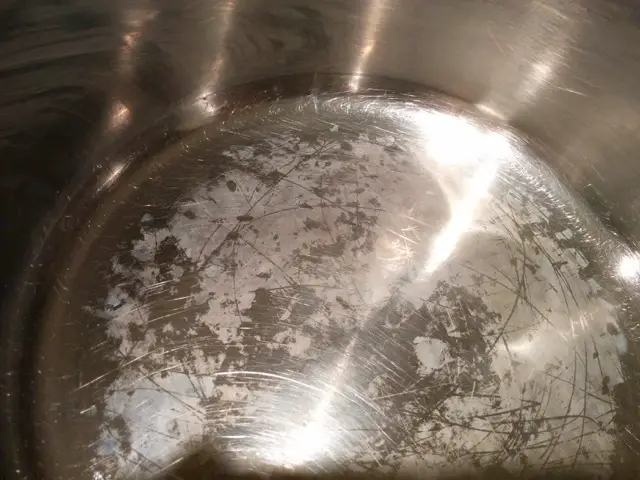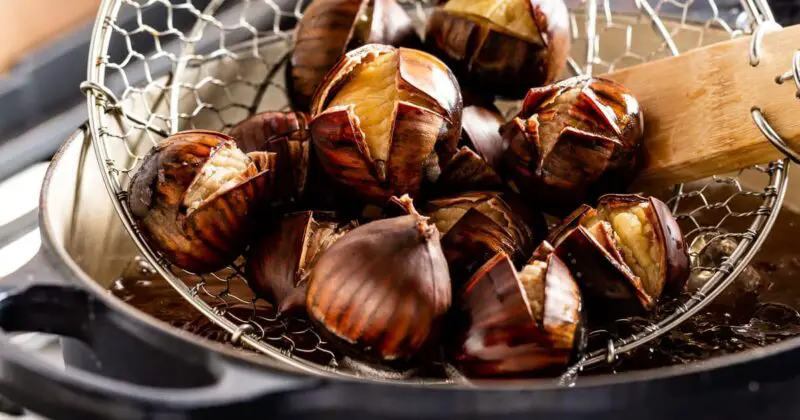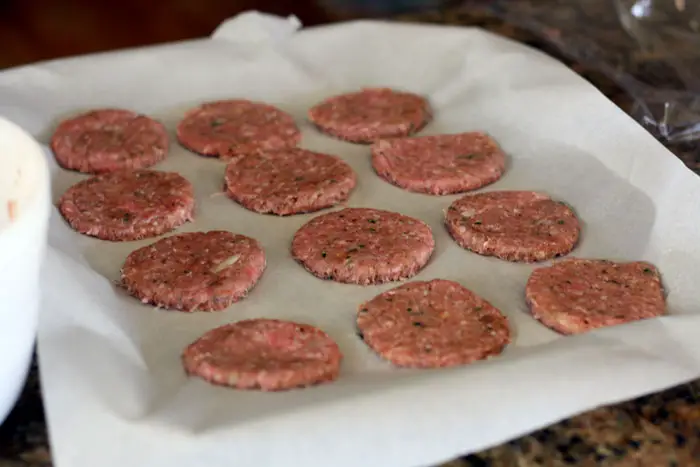What’s That White Residue Left Behind After Boiling Water?
Boiling water is a common practice that has been used for centuries to purify water. It is a simple process where water is heated to its boiling point, and then the heat is maintained until all impurities are eliminated. However, after boiling water, you may notice a white residue left behind in the pot. This residue can be confusing, especially if you’re not sure what it is or how to get rid of it.
In this article, we’ll discuss the science behind the white residue left after boiling water, its chemical composition, and impacts on plumbing and appliances. We’ll also go through prevention techniques and common myths about avoiding or eliminating white residue.
Understanding Boiling Water
To understand why white residue forms after boiling water, we need to first understand how boiling water works. When water reaches its boiling point (100°C or 212°F), it starts to vaporize and turn into steam. The heat needed for this process to happen comes from an external source such as a stove or fire.
When water vaporizes, any impurities in the water are left behind. This includes minerals like calcium and magnesium, which are two of the most common minerals found in tap water. As more and more steam rises from the boiling water, these minerals become concentrated and eventually form a white residue left behind in the pot.
The Science Of White Residue after Boiling Water
The white residue left behind after boiling water is primarily composed of minerals like calcium and magnesium. These minerals dissolve easily in hot water but quickly harden when exposed to air or cooler temperatures. The science behind this phenomenon lies in a process called precipitation.
The hardness of water refers to its content of dissolved minerals like calcium and magnesium. These minerals react with alkalinity in the water, especially when heated, to precipitate as hard crust on utensils and get deposited or left behind after evaporation. Alkalinity is a measure of water’s ability to resist a change in pH levels. Significantly high alkaline water can cause stains on clothes, make skin dry and even result in certain diseases such as Kidney stones over time.
The rate of precipitation is influenced by temperature, pressure (or lack thereof), pH levels and dissolved gases present in the water. These elements and environmental factors accumulate to create the chalky white residue we see in our pots.
Chemical Composition of White Residue
The deposit found at the bottom or lining of your pot contains a variety of elements. Calcium and magnesium are the primary offenders responsible for white residue; they contribute about 90 percent of total mineral content. A trace amount of iron oxide may also be present depending on the source of water since many iron-based pipes are used for plumbing leading from a public source- from reclaimed or waste-water. Iron oxide being composed partially of oxygen bonds easily with two made substances – calcium and magnesium.
The buildup that results from reacting calcium, magnesium, and other hard substances during precipitation produces an alkaline mineral compound such as Calcium Carbonate (CaCO3). Calcium Carbonate holds no harm for humans, animals or plants but causes an adverse effect on appliances and household plumbing overtime.
Impacts And Consequences Of White Residue Formation
White residue build up may seem like a minor inconvenience at first; however, it can impact household appliances significantly over long periods.In dishwashers, grinding causes these solids to help form clogs in pumps, spray heads and can cause increased drainage problems. Deposits can collect around faucets resulting in blockages causing damage over time.
Regular, extensive to-and-fro cleaning, descaling and scrubbing are ways to keep your appliances free from white residue. Additionally, the buildup can reduce the efficiency of applicances or plumbing fixtures which leads to higher energy and water bills or even replacement demands. Everyone is aware of how quickly mineral deposits can accumulate around faucets, walls and shower heads; that is another cost of cleaning and maintaining these surfaces.
Furthermore, hard water affects the taste of food and water beverages! For example -tea and coffee. These drinks tend to taste more bitter when brewed with water rich in magnesium, calcium, and iron. Spots on glasses or utensils are common after washing dishes due to the presence of hard minerals.
Prevention Techniques And Solutions For White Residue Formation
To minimize the buildup of white residue formation on appliances such as dishwashers or electric kettles always use filtered water.
- Prevent mineral buildup by wiping down appliances after each use
- Avoid leaving standing water in containers for extended periods – this keeps growth of bacteria or scaling at bay.
- Invest in a water softener system or use nontoxic cleaners specifically designed to remove hard water stains!
A more feasible solution would be installing a salt-based Ion exchange system to remove excess mineral content from hard water. By exchanging ions charged with hard minerals with ions carrying no harmful property, you will lessen the amount of white residue formed in your pots. To make it even simpler – Using distilled or purified bottled drinking water instead of tap can significantly improve your results since these products have very low amounts (<5 ppm) dissolved solids (minerals).
Common Myths Around White Residue After Boiling Water
There are several myths around preventing white residue after boiling water. We have collected three of the most common ones.
- Myth #1: Boiling Water Twice Will Reduce Residue: No matter how many times one boils water, if you’re not using a water softener system to change its total hardness, minerals will still crystalize forming chalky residue.
- Myth #2: Only Bottled Water Can Prevent White Residue: Though bottled water is a reliable solution without any harmful minerals over tap, it is not considered as the immediate prevention since no brands (typically) advertise marketed as ‘no hard-water’ equating to “no white spots’ guarantee.; there can still be deceiving contents or product tampering.
- Myth #3: Drinking Water Mixed with Vinegar helps Eliminate White Residue: This is not a viable solution; Ingesting any vinegars or acidic substances from tap not only negatively impacts your health, but also furthers the development of white residue due to its acid level causing more corrosion on metal pipes and appliances becoming worse over time.
Wrapping Up And Conclusion
White residue buildup after boiling water may appear harmless at first but can lead to significant consequences later on. Understanding The science and composition of white residue formation can help you fight this stubborn household menace before it starts affecting your fixtures and health adversely. Implementing preventive techniques such as a salt-based ion exchange system, descaling methods or using bottled distilled water can significantly lower residue buildup and maintain appliance efficiency over long periods.
References And Further Reading
- Magnesium importance in human body – https://www.hsph.harvard.edu/nutritionsource/magnesium/
- Impact of excess mineral content in drinking water on human health -https://www.ncbi.nlm.nih.gov/pmc/articles/PMC3775162/
- The effect of alkaline substance concentration on water hardness -https://doi.org/10.1016/j.jwpe.2019.101096
- Tap Vs Bottled Water debate- https://pubmed.ncbi.nlm.nih.gov/26302969/
Frequently Asked Questions
How safe is the white residue left after boiling water?
The white residue that appears after boiling water can be a buildup of minerals such as calcium, magnesium, and potassium. These minerals are usually harmless and not a safety concern. However, if your tap water contains high levels of dissolved minerals, the residue can build up over time and affect the taste and appearance of your water. It’s recommended to clean your kettle or other boiling appliance regularly to prevent mineral buildup.
Can consuming the white residue from boiled water pose any health risks?
The white residue left after boiling water is not harmful to human health when consumed in small amounts. However, it is recommended to filter the water before drinking or cooking with it to remove the minerals that cause the residue. Consuming large amounts of mineral-rich water over time can have negative effects on your health, including kidney stones and other health issues.
How does boiling water lead to white residue formation?
Boiling water causes some of the dissolved minerals in the water to precipitate out of the solution and settle on the surface as a white film or crust. This process is known as scaling, which is caused by minerals such as calcium, magnesium, and potassium. The amount of scaling depends on factors such as how hard your water is and how often you boil it.
How can you prevent/minimize the formation of white residue when boiling water?
One way to minimize or prevent mineral buildup when boiling water is to use soft or filtered water as these contain fewer dissolved minerals. Also, avoid leaving any excess amount of boiled-down minerals behind in appliances like kettles. You should attempt cleaning before reuse. Alternatively, using a de-scaler agents/chemicals meant for appliance cleaning can help dissolve the mineral build-up and keep your appliances looking clean while protecting them from damage caused by limescale.







